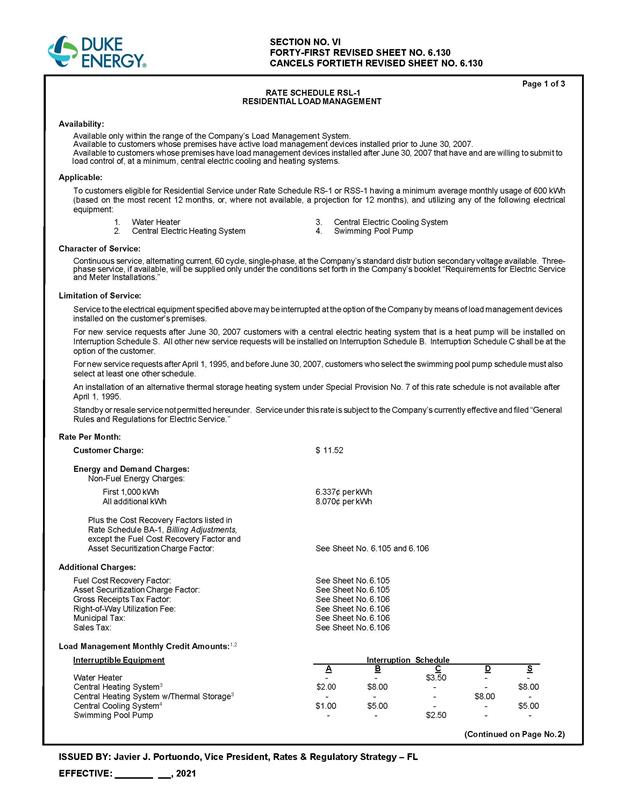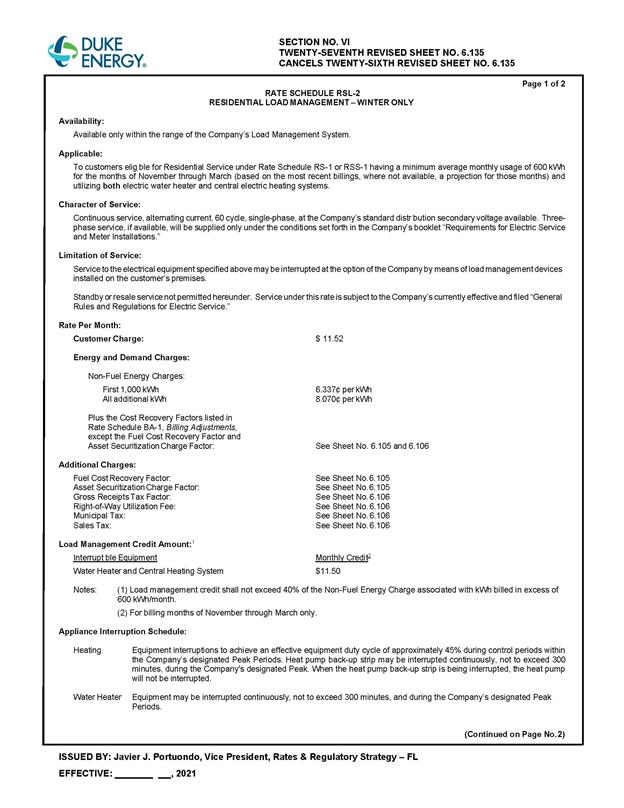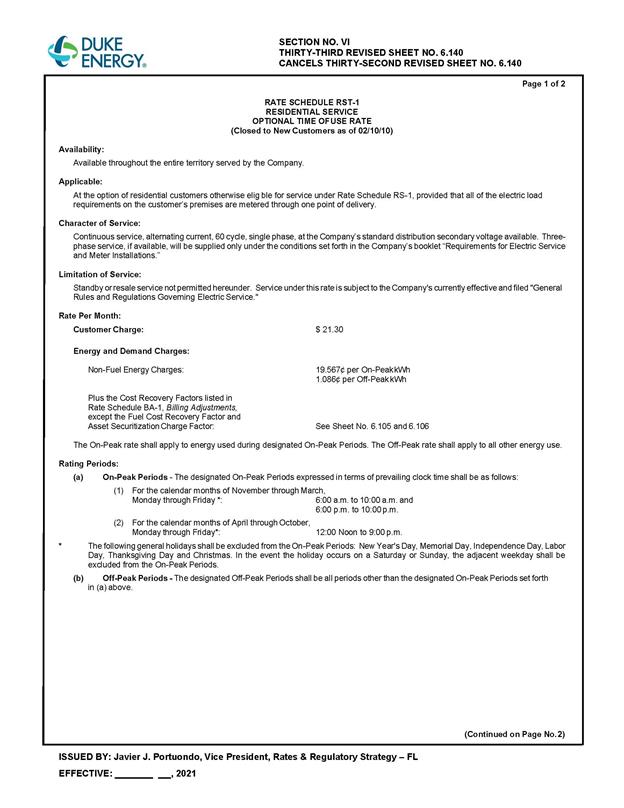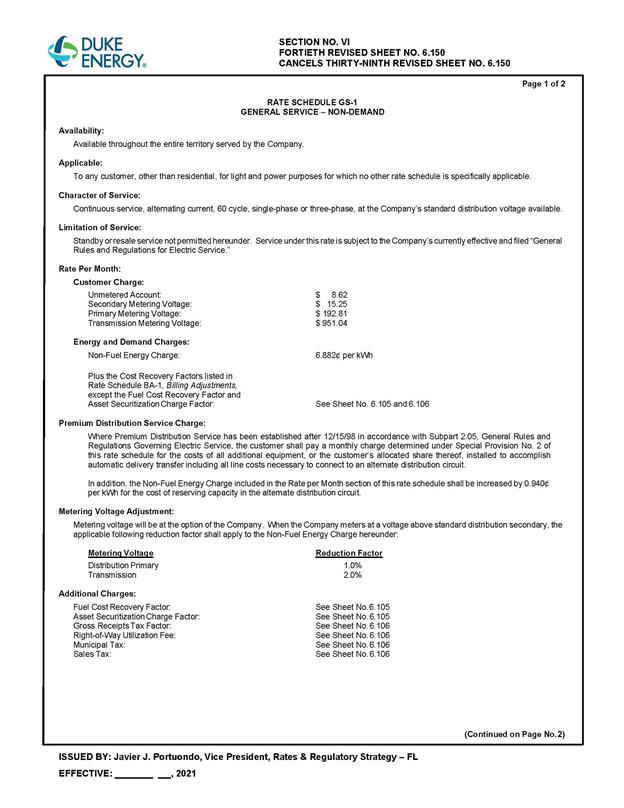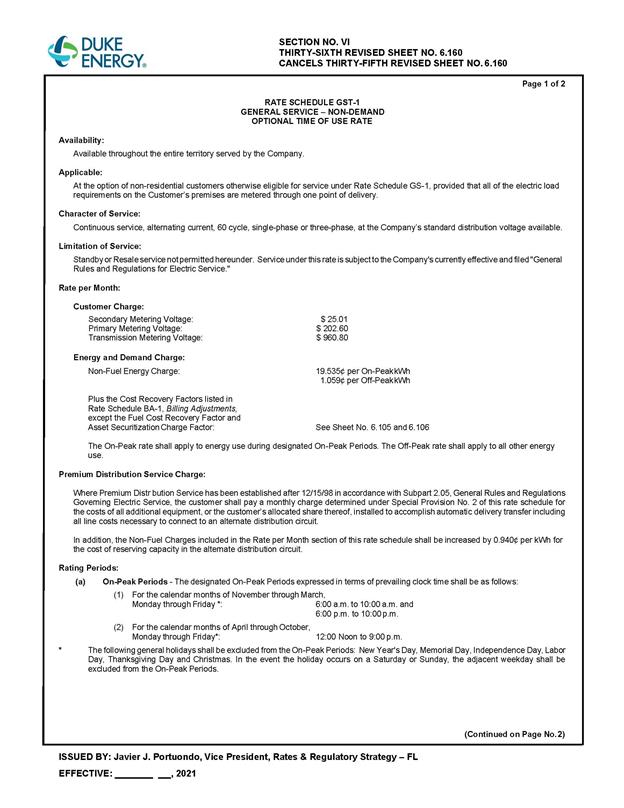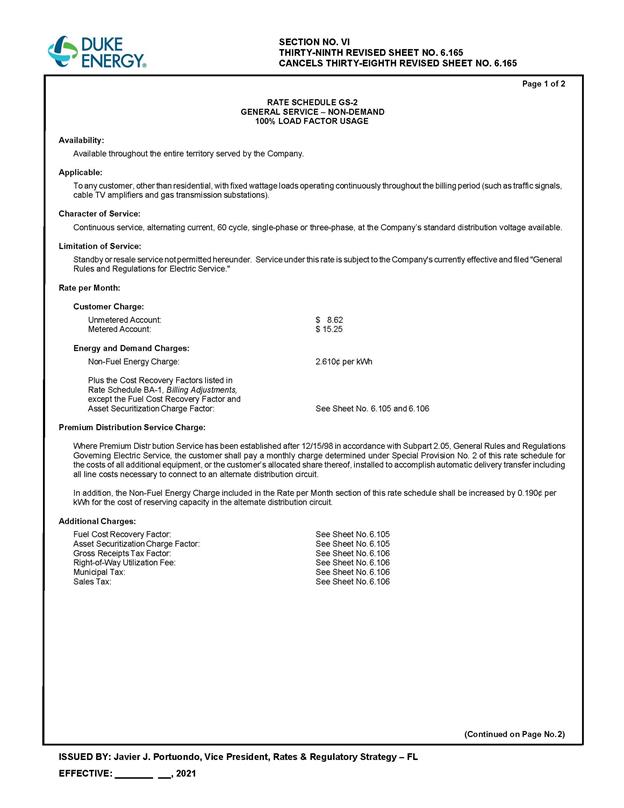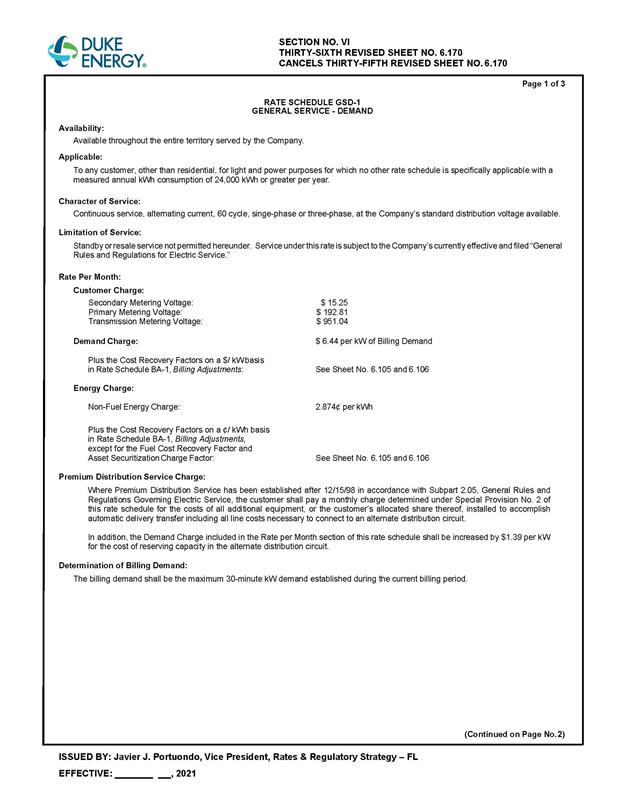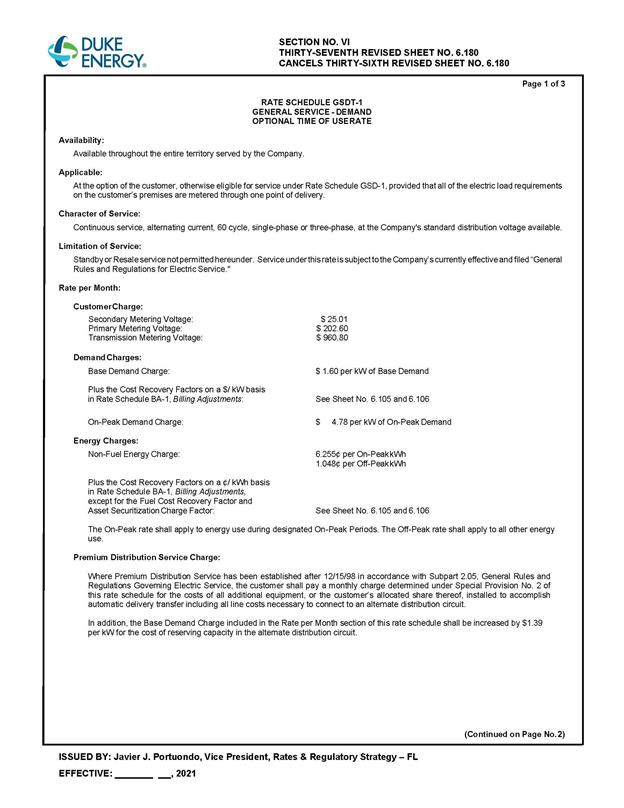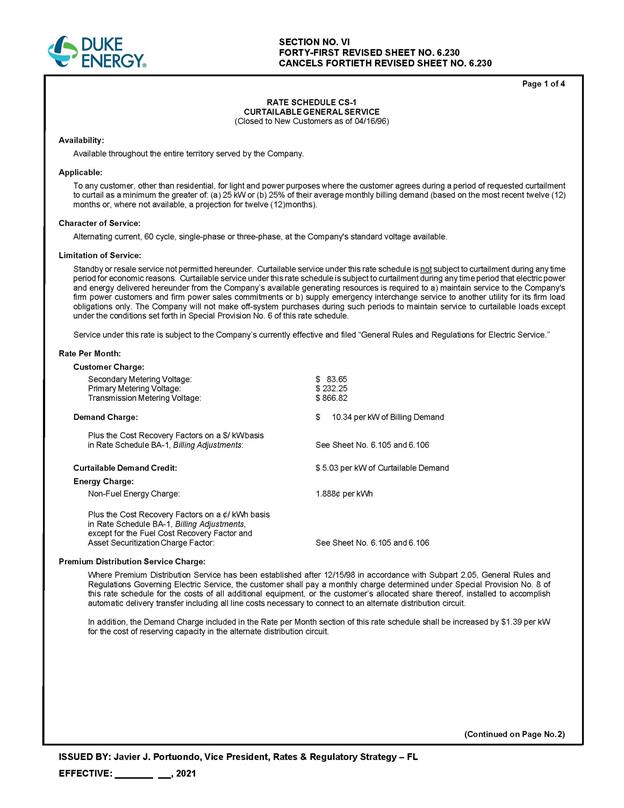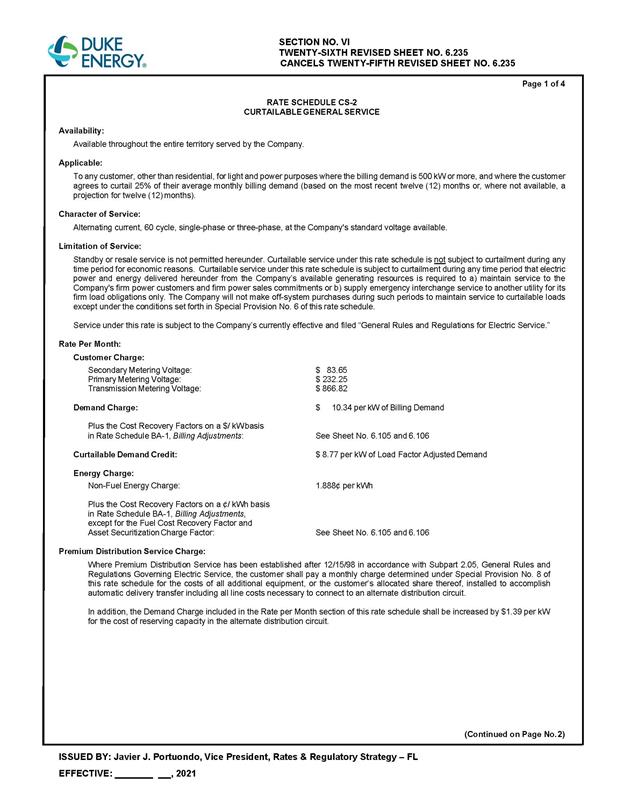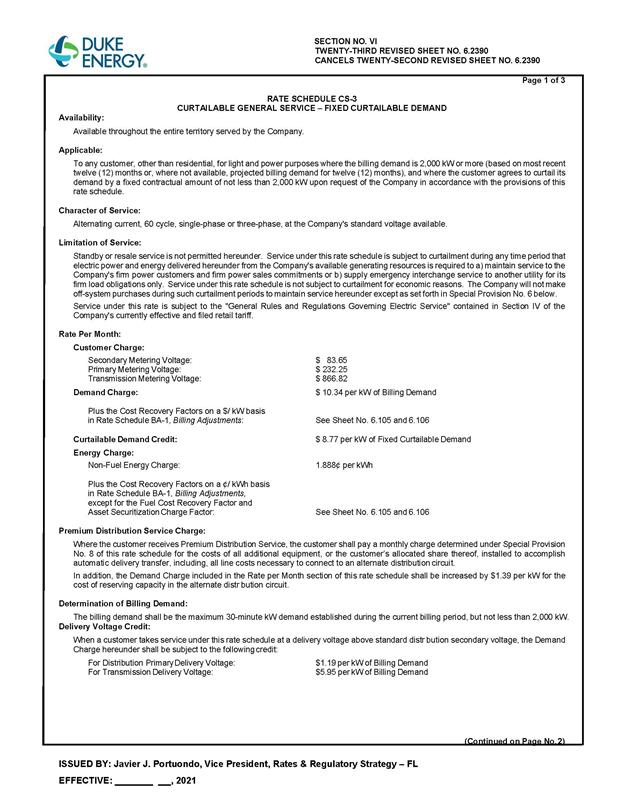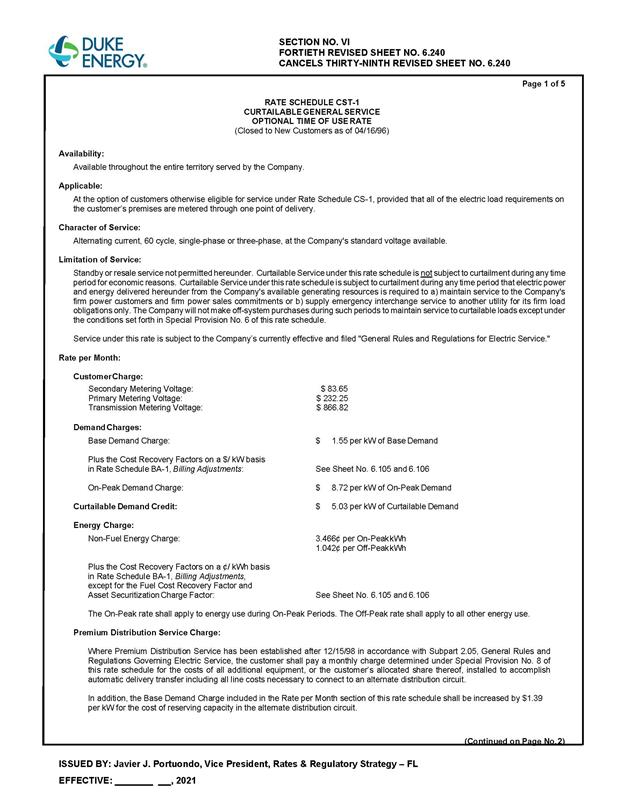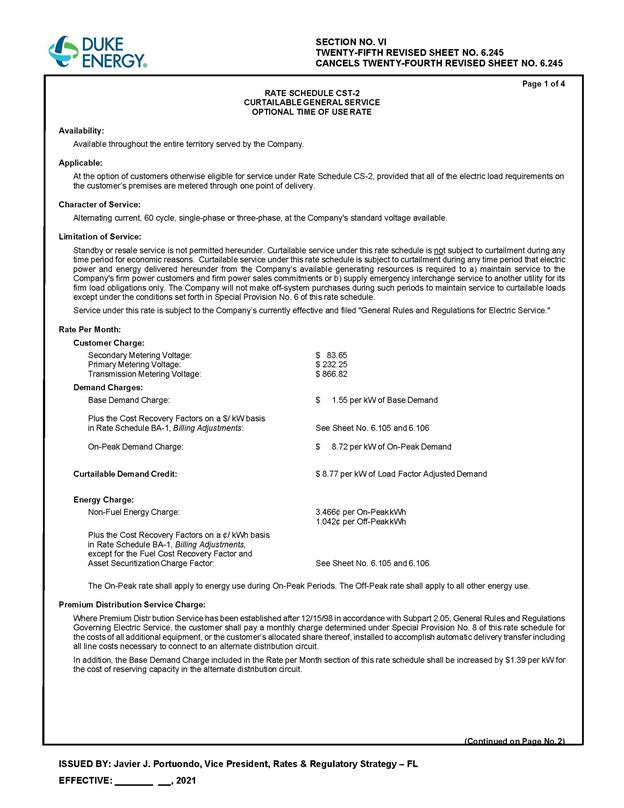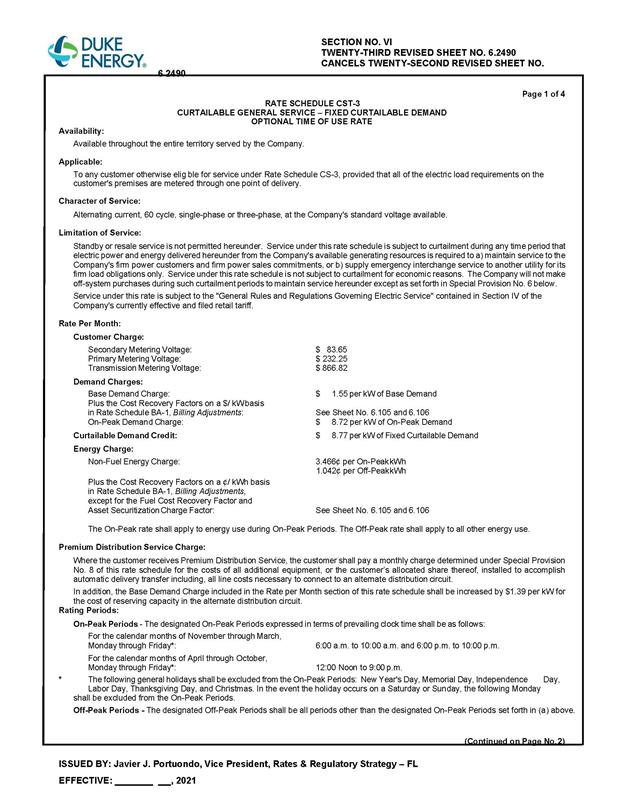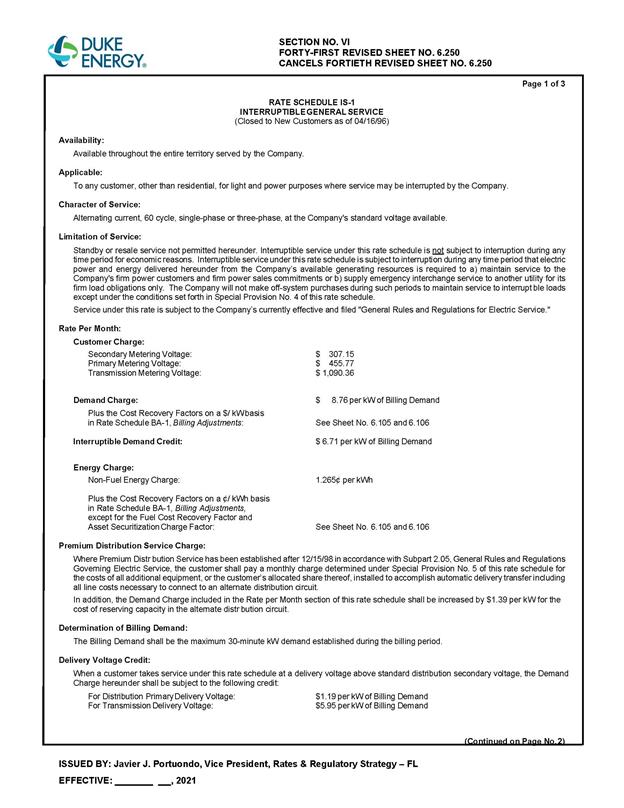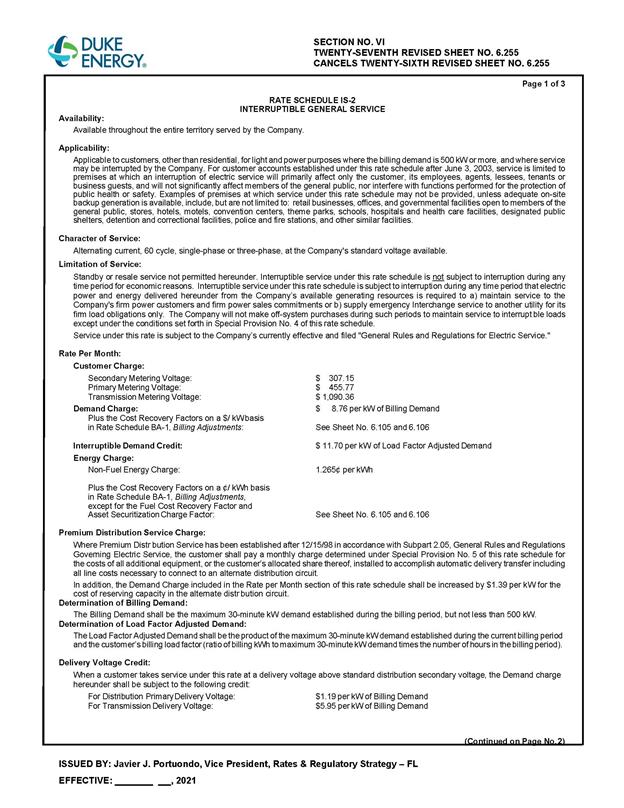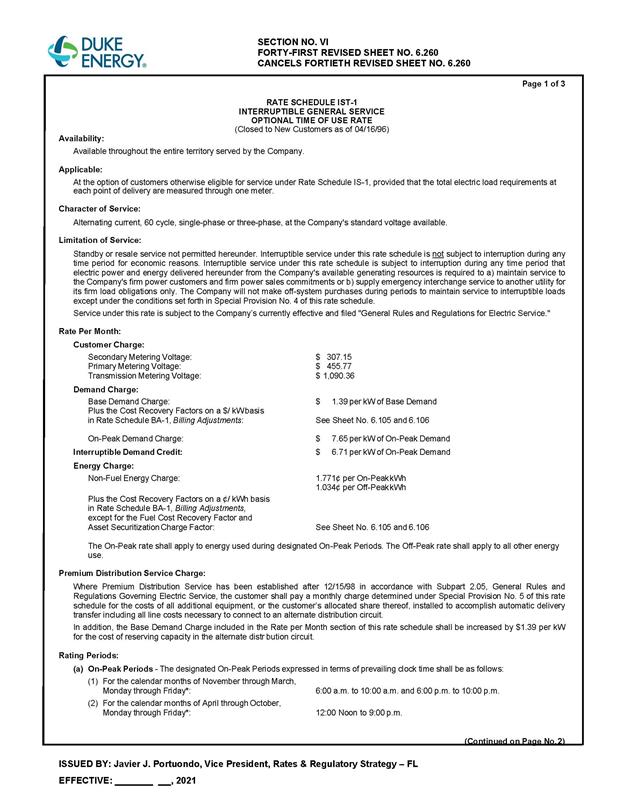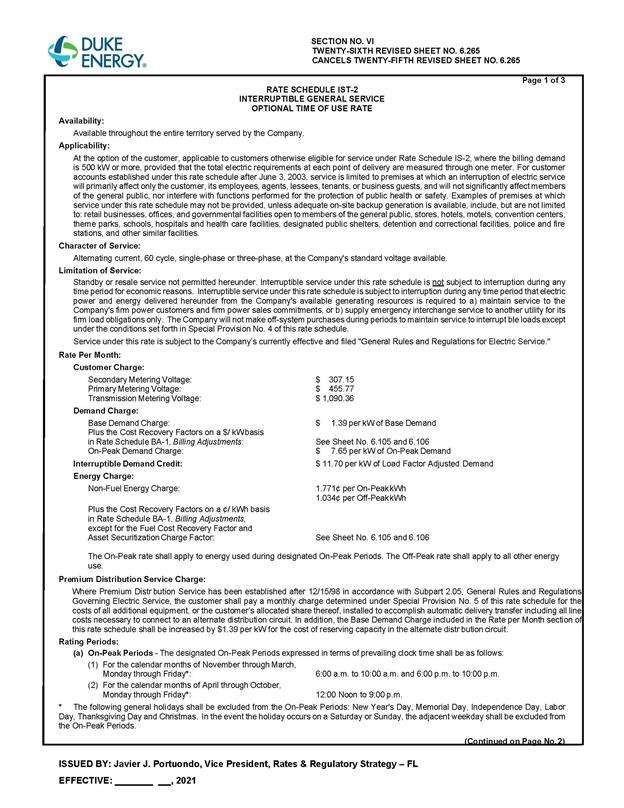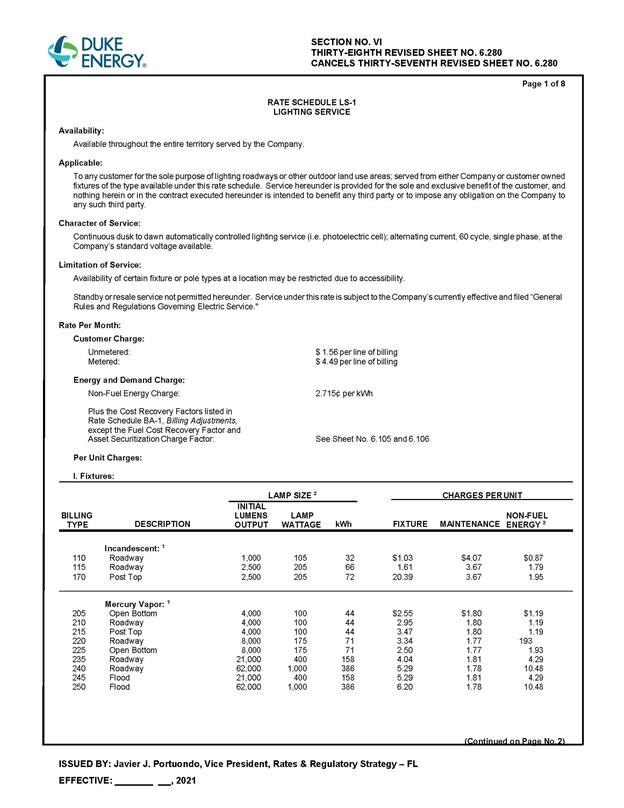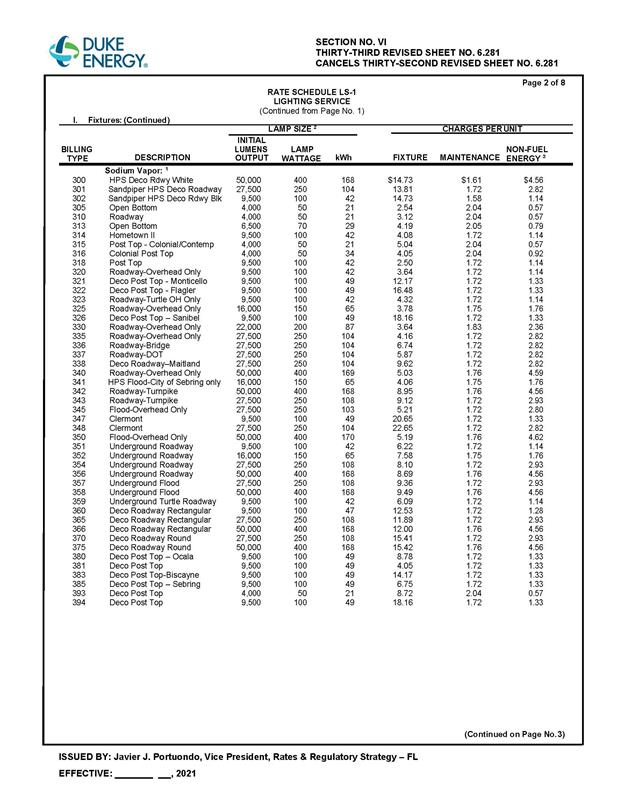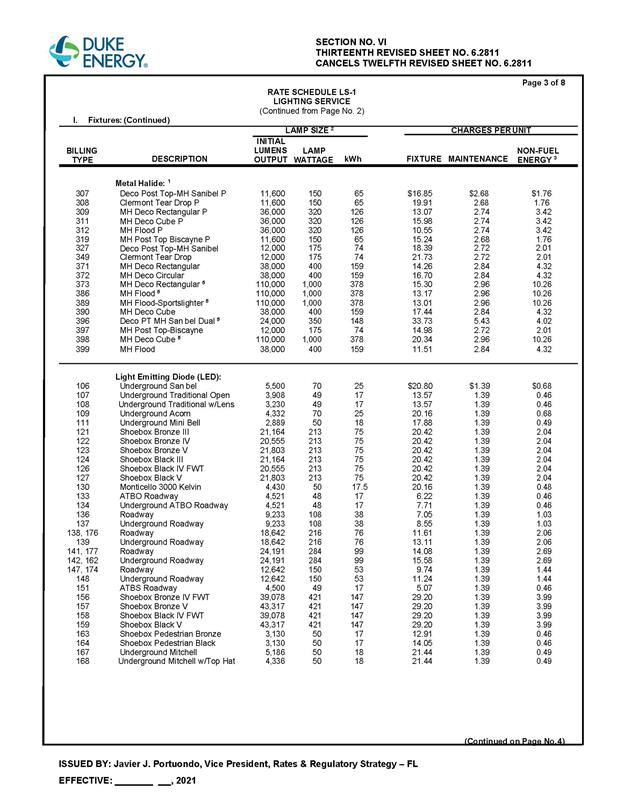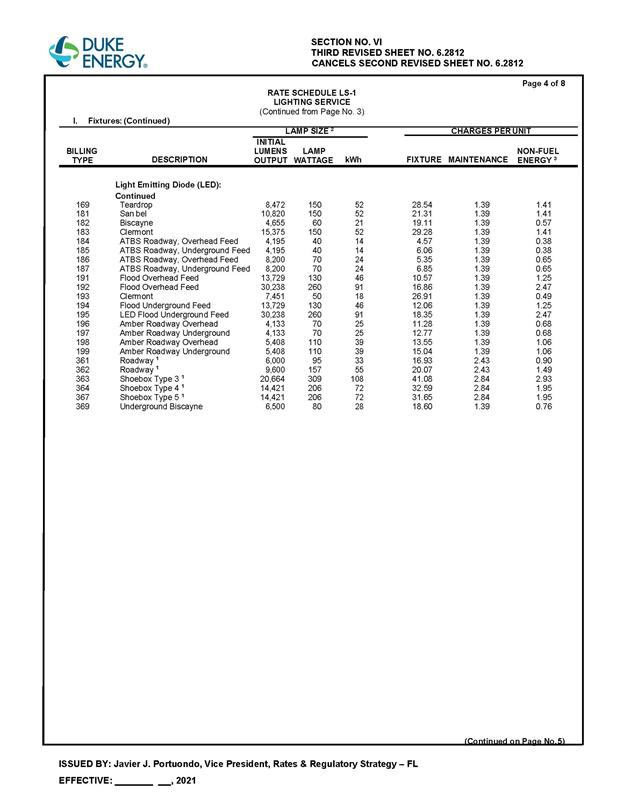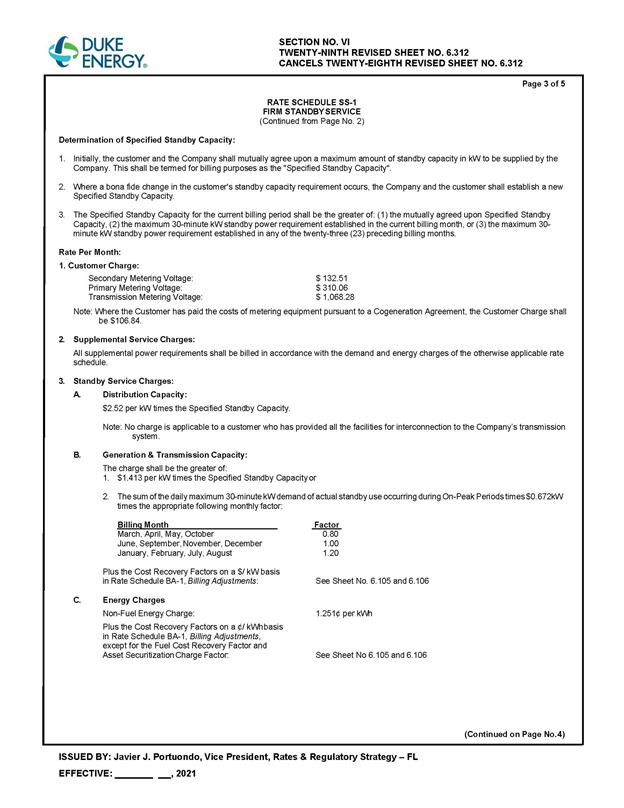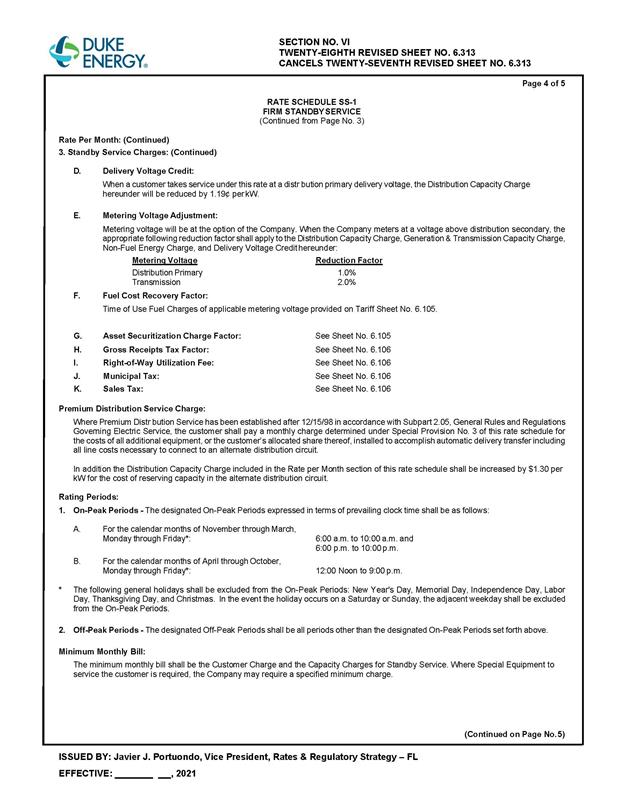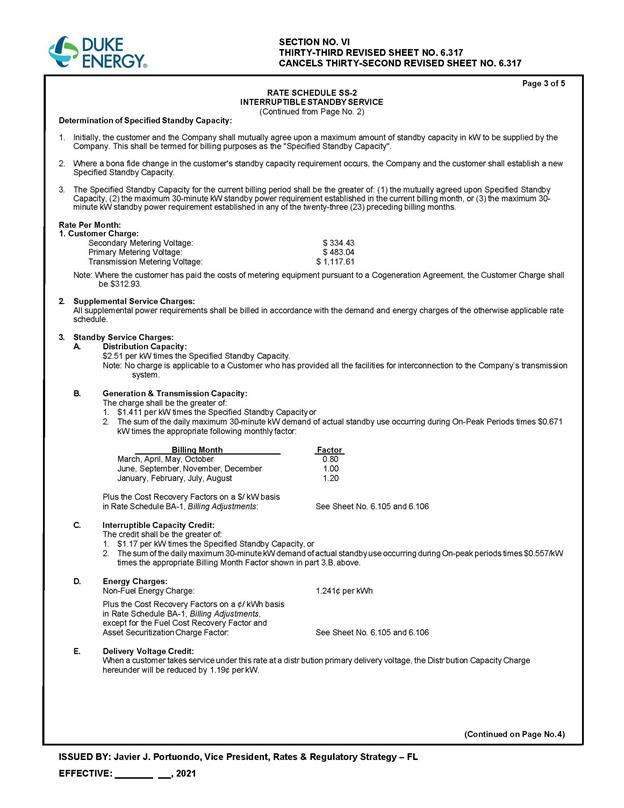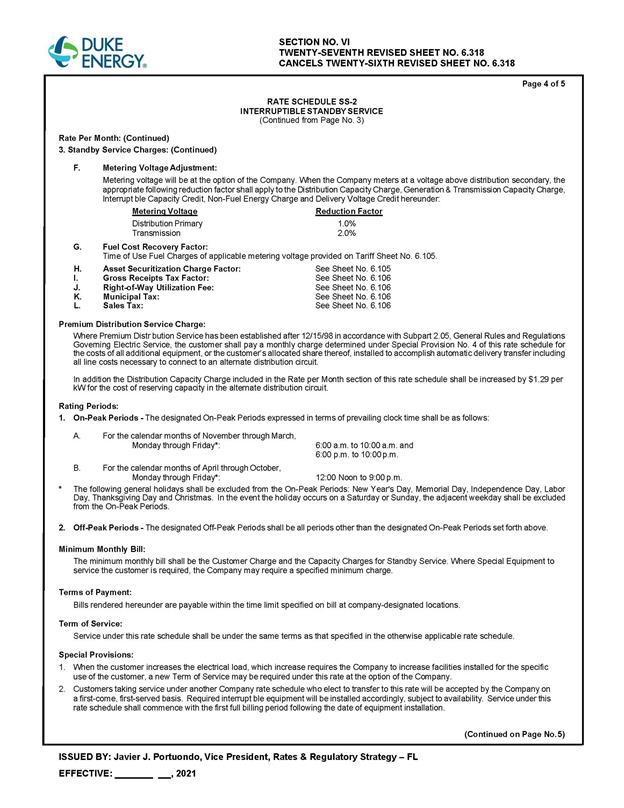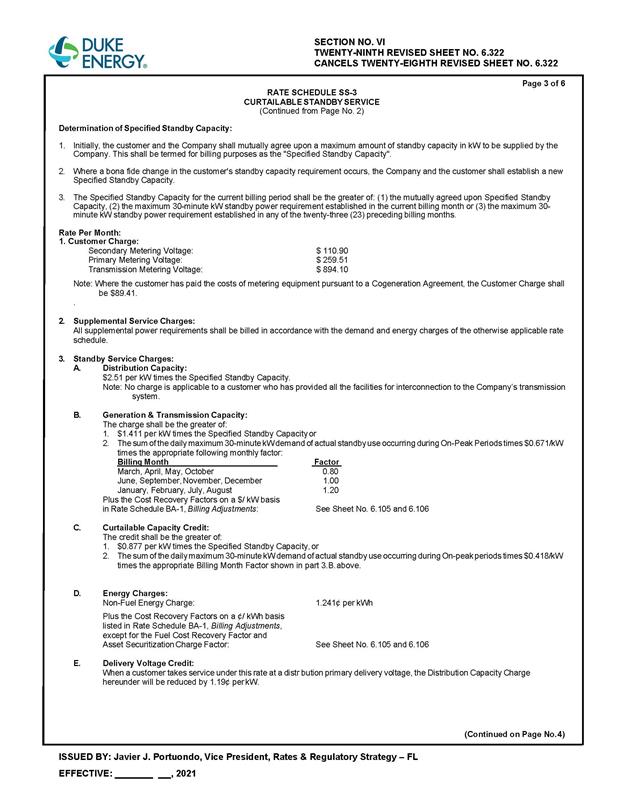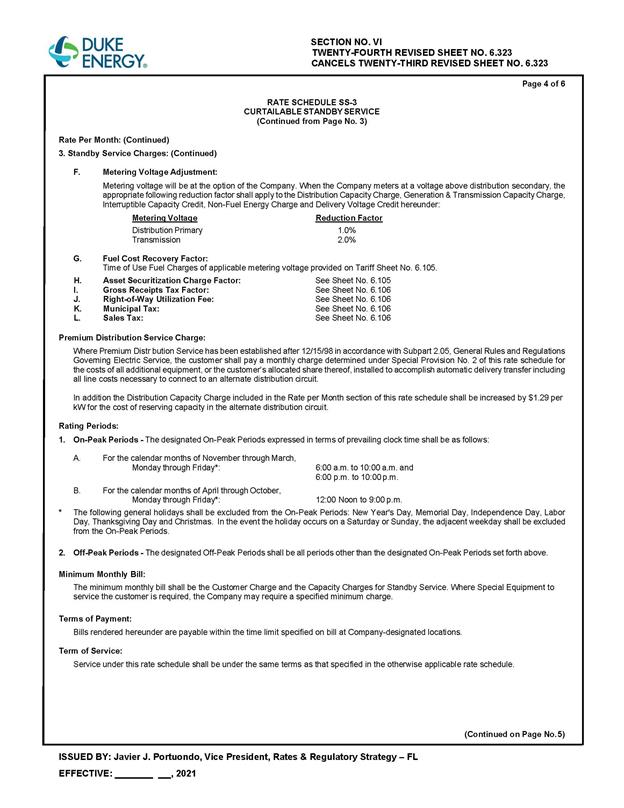Discussion
of Issues
Issue 1:
Are the installed costs of the solar projects
proposed by DEF (Twin Rivers, Santa Fe, Charlie Creek, Duette, and Sandy Creek)
within the installed cost cap required by subparagraph 15(a) of the 2017
Settlement?
Recommendation:
Yes. The estimated installed costs appear reasonable
and the resulting weighted average cost of the combined projects in DEF’s Third
SoBRA tranche is below the installed cost cap of $1,650 per kilowatt
alternating current (kWac), as required by the 2017 Settlement.
(Phillips)
Staff Analysis:
The Third SoBRA tranche consists of five projects:
Twin Rivers, Santa Fe, Charlie Creek, Duette, and Sandy Creek. Each of the
projects is designed to be approximately 75 MW. The capacity and projected in-service
dates for each project are listed in Table 1-1. DEF is only seeking recovery
through the SoBRA Mechanism of 56.6 MW of the Sandy Creek project. The recovery
of the remaining 18.3 MW of capacity may be addressed in a future docket.
Table 1-1
Installed Capacity and Projected
In-Service dates of Third SoBRA Tranche
|
Project Name
|
Capacity (MW)
|
Estimated In-Service Date
|
|
Twin Rivers
|
74.9
|
February 2021
|
|
Santa Fe
|
74.9
|
March 2021
|
|
Charlie Creek
|
74.9
|
December 2021
|
|
Duette
|
74.5
|
December 2021
|
|
Sandy Creek
|
74.9 (56.6 SoBRA)
|
April 2022
|
Source: Direct Testimony of
DEF witness Benjamin M. H. Borsch Exhibit (BMHM-1)
Paragraph 15 of the 2017 Settlement outlines the
conditions under which DEF may seek cost recovery of certain solar facilities.
Subparagraph 15(c) outlines the issues to be considered for projects that are
below 75 MW. The requirements for average installed cost and overall
reasonableness of costs are addressed in this issue, while system
cost-effectiveness, and need for the facilities, are addressed in Issues 2 and
3, respectively.
Subparagraph 15(a) of the 2017 Settlement specifies that
the weighted average cost of all projects in a SoBRA tranche may be no more
than $1,650 per kWac installed to be eligible for recovery. The 2017
Settlement states all construction costs for the projects are to be included,
such as land acquisition costs. The estimated installed cost and cost per kWac
for each project are listed in Table 1-2. The unit cost of both the weighted
average of all projects and each project individually are below the $1,650/ kWac
requirement. The amount listed for the Sandy Creek project is the total amount,
but only a partial amount coinciding with the 56.6 MW of capacity will be
allowed recovery through the SoBRA mechanism.
Table 1-2
Estimated Installed Cost, in
Total and by Unit of Capacity
|
Project Name
|
Estimated Installed Cost
($)
|
Estimated Installed Cost
($/kWac)
|
|
Twin Rivers
|
$100,037,587
|
$1,336
|
|
Santa Fe
|
$108,910,046
|
$1,454
|
|
Charlie Creek
|
$97,950,968
|
$1,308
|
|
Duette
|
$108,572,491
|
$1,457
|
|
Sandy Creek
|
$99,123,932
|
$1,323
|
|
Weighted
Average Unit Cost
|
-
|
$1,376
|
Source: Direct Testimony of
DEF witness Benjamin M. H. Borsch Exhibit (BMHM-1)
In three of the projects, DEF will be leasing the land for
the facility instead of purchasing it. Lease costs are not included in the
$/kWac calculation. In response to staff’s data requests, the Company provided
the estimated net present value of payments under these three leases. Even including
lease costs as part of the $/kWac calculation, the weighted average cost
of all projects is less than the $1,650/kWac installed cost cap.
The installed cost of a project consists of major
equipment, balance of system, construction management, transmission
interconnection, and land cost. This includes but is not limited to the cost of
solar panels, transformers, contractors, legal fees, development fees, and
insurance. DEF utilized a competitive process when soliciting contractors and
procuring material and equipment for the Third SoBRA tranche. Given the use of
competitive bidding in multiple aspects of the projects, the costs appear to be
reasonable.
Conclusion
Based on staff’s review, the estimated installed costs
appear reasonable and the resulting weighted average cost of the combined
projects in DEF’s Third SoBRA tranche is below the installed cost cap of $1,650
per kWac, as required by the 2017 Settlement.
Issue 2:
Are the solar projects proposed by DEF cost
effective pursuant to subparagraph 15(c) of the 2017 Settlement?
Recommendation:
Yes. DEF’s proposed Third SoBRA tranche would result
in lower system costs as compared to the system without the projects, as
required by the 2017 Settlement. (Phillips)
Staff Analysis:
Subparagraph 15(c) defines the cost-effectiveness of
a SoBRA tranche to be whether the projects will lower the projected system
cumulative present value revenue requirement (CPVRR) as compared to a system
without the projects. This compares the cost of the added generation,
transmission, operation and maintenance (O&M) and other expenses of the
proposed SoBRA tranche to the avoided traditional generation, transmission,
fuel, and O&M expenses that would otherwise have been incurred if the
facilities were not constructed.
Overall, DEF estimates that the Third SoBRA tranche would
produce savings of $37 million over the life of the projects before
consideration of costs associated with carbon dioxide (CO2) and
equivalent emissions. Inclusive of CO2 emissions costs, DEF
estimates a savings of $234 million. The primary driver of the savings is
avoided fuel costs, approximately $435 million, followed by avoided generation
costs of $217 million, and avoided CO2 emissions costs of $197
million. The Company also ran scenarios with high and low fuel costs, with only
the low fuel and no CO2 emission cost scenario resulting in a loss
for customers, of approximately $20 million. The breakeven point for the Third
SoBRA tranche is expected to be in 2048 if carbon emission costs are not
included and 2040 if carbon emission costs are included. The results of each
scenario are listed in Table 2-1.
Table 2-1
System CPVRR Savings/(Costs)
by Fuel and Emissions Scenario ($ Millions)
|
Fuel / Emissions
Scenario
|
High Fuel
|
Mid Fuel
|
Low Fuel
|
|
No CO2
|
$173
|
$37
|
($20)
|
|
With CO2
|
$376
|
$234
|
$177
|
Source: Direct Testimony of
DEF witness Benjamin M. H. Borsch Exhibit (BMHM-4)
Conclusion
Based on staff’s review, DEF’s proposed Third SoBRA
tranche would result in lower system costs as compared to the system without
the projects, as required by the 2017 Settlement.
Issue 3:
Are the solar projects proposed by DEF needed
pursuant to subparagraph 15(c) of the 2017 Settlement?
Recommendation:
Yes. DEF’s proposed Third SoBRA tranche is needed as
it will produce economic benefits to the general body of ratepayers, provide
firm summer capacity, and increase the fuel diversity of DEF’s generation. (Phillips)
Staff Analysis:
Subparagraph 15(c) of the 2017 Settlement specifies
that one of the issues to be considered is whether, when considering all
relevant factors, there is a need for the SoBRA projects. Need is undefined in
the 2017 Settlement, but can be reasonably interpreted to include multiple
forms of need, such as economic, reliability, and fuel diversity.
As discussed in Issue 2, the Third SoBRA tranche is
projected to produce savings over the life of the project between $37 and $234
million, with and without CO2 emission costs, respectively. In
response to staff’s data request, DEF estimates that for its scenario including
CO2 emissions costs, annual customer savings begin in 2040 and
continue for the life of the projects. Based
on this analysis, an economic need could be supported.
Regarding reliability, due to their production
characteristics solar facilities only contribute towards the reliability of the
summer peak. Each of the facilities has been constructed at a direct current
capacity of approximately 130 percent of the alternating current capacity,
resulting in increased energy during shoulder periods, and increased
contribution towards summer firm capacity. While DEF’s net firm system demand
is lower in summer than in the winter, summer tends to control unit addition
planning. The proposed solar facilities would improve DEF’s summer reserve
margin slightly in the early years while decreasing its winter reserve margin
by avoiding or deferring conventional generation, addressing a reliability
need. The projects will also defer the construction of a single combustion
turbine in the year 2027 that would otherwise be needed for reliability
purposes.
Fuel diversity through renewable energy generation, such
as the projects of DEF’s Third SOBRA tranche, is encouraged by several
statutes, including Section 366.91, F.S., which states in part:
Renewable energy resources have the potential to help
diversify fuel types to meet Florida’s growing dependency on natural gas for
electric production, minimize the volatility of fuel costs, encourage
investment within the state, improve environmental conditions, and make Florida
a leader in new and innovative technologies.
The energy production of the Third SoBRA tranche would
offset the remainder of the DEF system’s fuel consumption, which is primarily
natural gas.
Conclusion
There is a need for DEF’s proposed Third SoBRA tranche
when considering the economic, system reliability, and fuel diversity benefits
to the general body of ratepayers.
Issue 4:
Are the solar projects proposed by DEF otherwise in
compliance with the terms of paragraph 15 of the 2017 Settlement?
Recommendation:
Yes. DEF’s Third SoBRA tranche meets the
requirements of the 2017 Settlement and the projects are eligible for cost
recovery through the SoBRA mechanism established therein. (Phillips)
Staff Analysis:
Paragraph 15 of the 2017 Settlement outlines various
criteria and requirements to be met by projects to be considered eligible for
recovery through the SoBRA mechanism it established. These include: the
reasonableness of installed costs which must include certain categories of
costs and be below an installed cost threshold, as discussed in Issue 1 based
on subparagraph 15(a); the projection that the projects will produce system
savings on a CPVRR basis, as discussed in Issue 2 based on subparagraph 15(c);
and whether, when considering all relevant factors, there is a need for the projects,
as discussed in Issue 3 based on subparagraph 15(c).
Other requirements exist within Paragraph 15 for the projects,
discussing various factors such as the role of affiliate companies, the amount
of capacity allowed to be sought by year, and how the calculation of the
revenue requirement is to be conducted. Based on staff’s review, these factors,
along with those outlined in Issues 1 through 3 have been met by DEF’s Third
SoBRA tranche.
Conclusion
Based on staff’s review, DEF’s Third SoBRA tranche meets
the requirements of the 2017 Settlement and the projects are eligible for cost
recovery through the SoBRA mechanism established therein.
Issue 5:
What is the annual revenue requirement associated
with each of the solar projects proposed by DEF?
Recommendation:
The total jurisdictional annual revenue requirement
associated with each of the five proposed projects is as listed in Table 5-1.
(Higgins)
Staff Analysis:
In the 2017 Settlement, DEF received authorization
for a framework to recover costs associated with the construction and operation
of a then-conceptual series of solar generating facilities.
The authorized SoBRA framework included conditions by which the Company may
petition the Commission to implement project-specific estimated annual revenue
requirements subject to certain agreed-upon conditions.
The instant petition by the Company represents the final SoBRA-related request
under the 2017 Settlement.
The Company is requesting the Commission approve annual
revenue requirements for the five plants that comprise DEF’s Third SoBRA under
the 2017 Settlement. The requested revenue requirements are associated with these
five proposed generating plants: Twin Rivers, Santa Fe, Charlie Creek, Duette, and
Sandy Creek. As shown in Issue 1, the Twin Rivers and Santa Fe projects are
planned to go into service in early 2021, while Charlie Creek and Duette projects
are planned to go into service in the fourth quarter of 2021, and the Sandy
Creek project is planned to go into service during the second quarter of 2022.
Staff notes the capital and O&M portions of Sandy
Creek’s annual revenue requirement have been reduced to 75.6 percent to reflect
only 56.6 megawatts of the 74.9 megawatts of the facility’s capacity being
included for recovery under the SoBRA framework. DEF may seek recovery of
the remaining portion of the Sandy Creek plant in a separate proceeding.
The major classifications/components of the requested
annual revenue requirement are: production and transmission costs related to
capital deployment, production and transmission depreciation and
depreciation-related expenses, operation and maintenance expenses, insurance
and property expenses, and taxes.
The proposed cumulative annual revenue requirement
associated with all five plants under the Third SoBRA is approximately $62.5
million. Staff notes that per the terms of the 2017 Settlement, DEF is required
to perform a true-up if the actual/final capital expenditures are different from
the estimated capital expenditures, or if the facility in-service dates vary
from those originally assumed. Any credit/refund is to be effectuated through
the Capacity Cost Recovery Clause. Table
5-1 displays the proposed cumulative annual revenue requirements by plant
associated with DEF’s Third SoBRA request:
Table 5-1
Third SoBRA Estimated Jurisdictional
Annual Revenue Requirement
|
Plant
|
Revenue Requirement ($000)
|
|
Twin
Rivers
|
$13,083
|
|
Santa
Fe
|
13,902
|
|
Charlie
Creek
|
12,475
|
|
Duette
|
13,400
|
|
Sandy
Creek
|
9,683
|
|
Total
|
$62,543
|
Source: Direct Testimony of
DEF witness Thomas G. Foster, Exhibit (TGF-1)
Conclusion
The total jurisdictional annual revenue requirement
associated with each of the five proposed projects is as listed in Table 5-1.
Issue 6:
Should the Commission approve the tariff sheets
reflecting the annual revenue requirements for the Twin Rivers and Santa Fe solar
projects? In addition, should the Commission grant staff administrative
authority to approve the tariffs for the Charlie Creek, Duette solar projects
and the Sandy Creek projects?
Recommendation:
Yes. The Commission should approve the tariff sheets
as shown in Attachment A of the recommendation, which reflect the annual
revenue requirements listed in Issue 5 for the Twin Rivers and Santa Fe projects,
effective with the first billing cycle on or after the commercial in-service
date of both units. In addition, the Commission should grant staff
administrative authority to approve tariffs for the Charlie Creek and Duette projects
for implementation effective with the first billing cycle on or after the commercial
in-service date of both units and the Sandy Creek project for implementation
effective with the first billing cycle on or after the commercial in-service
date of that unit, using the annual revenue requirements listed in Issue 5 for
each of these projects. (Forrest, Coston)
Staff Analysis:
Issue 5 of the
recommendation provides the annual revenue requirements associated with each of
the five projects proposed by DEF in its proposed Third SOBRA. As noted in
Issue 1, these projects have varying implementation dates. As such, the Company
has requested that the rates be implemented over three phases.
The Company stated in its
petition that the Twin Rivers and Santa Fe projects are scheduled to go into
commercial service in early 2021. Per the 2017 Settlement, subparagraph 15(g),
“DEF shall be authorized to begin applying the base rate charges for each
adjustment authorized by this Paragraph to meter readings beginning with the
first billing cycle on or after the commercial in-service date of that solar
generation project.” DEF clarified with staff that the Twin Rivers project is
scheduled for a February 2021 in-service date and the Santa Fe project is
scheduled for a March 2021 in-service date; therefore, under the scheduled
in-service dates the tariffs, as shown in Attachment A to the recommendation,
would be effective with the first billing cycle in April 2021. The Company
should provide notification in the docket file of the actual in-service dates
of these projects.
The proposed tariffs reflecting
the revenue requirements for the Twin Rivers and Santa Fe projects are included
as Attachment A of the recommendation. These tariffs reflect a total revenue
requirement of $13,083,000 for the Twin Rivers project and $13,902,000 for the
Santa Fe project. The uniform percentage increase calculations for the class
revenue increases and resulting base rate increases are shown in Exhibit C to
the petition, which are calculated using the methodology approved in subparagraph
15(e) of the 2017 Settlement. For a residential customer using 1,000 kilowatt-hours,
the monthly base rate increase will be $0.78.
DEF stated in its petition that
the Charlie Creek project and Duette project are anticipated to go online in
the last quarter of 2021 and that the Sandy Creek project is anticipated to go
online in the second quarter of 2022. The Company requested staff be given
administrative authority to approve the tariffs associated with these projects
at the time the units go online. As with the Twin Rivers and Santa Fe projects,
the Company should provide notification in the docket file of the actual
in-service date of these projects.
Conclusion
Staff recommends that the Commission should approve the
tariff sheets as shown in Attachment A of the recommendation, which reflect the
annual revenue requirements listed in Issue 5 for the Twin Rivers and Santa Fe
projects, effective with the first billing cycle on or after the commercial
in-service date of both units. In addition, the Commission should grant staff
administrative authority to approve tariffs for the Charlie Creek and Duette projects
for implementation effective with the first billing cycle on or after the commercial
in-service date of both units and the Sandy Creek project for implementation
effective with the first billing cycle on or after the commercial in-service
date of that unit, using the annual revenue requirements listed in Issue 5 for
each of these projects.
Issue 7:
Should this docket be closed?
Recommendation:
If a protest is filed within 21 days of the issuance
of the order, the tariffs should remain in effect, with any revenues held
subject to refund, pending resolution of the protest. If no timely protest is
filed, this docket should be closed upon the issuance of a consummating order.
(Stiller, Trierweiler)
Staff Analysis:
If a protest is filed within 21 days of the issuance
of the order, the tariffs should remain in effect, with any revenues held
subject to refund, pending resolution of the protest. If no timely protest is
filed, this docket should be closed upon the issuance of a consummating order.




































